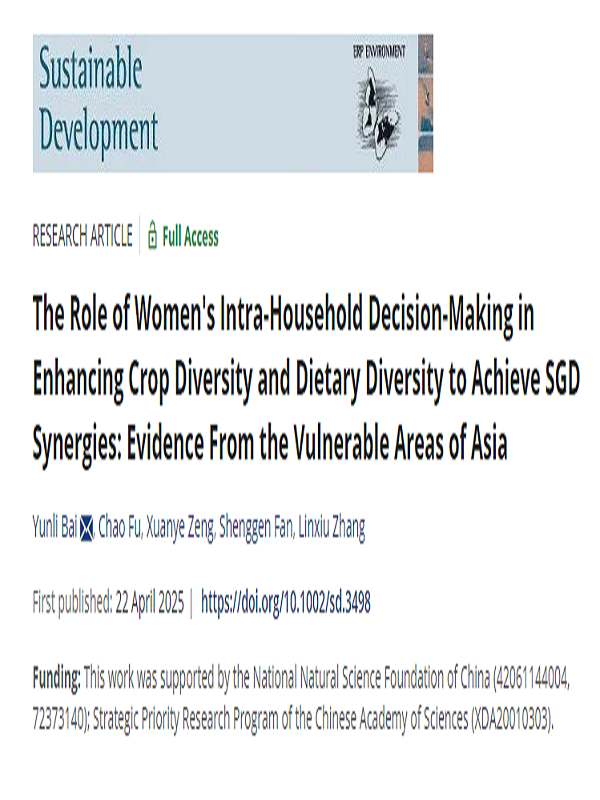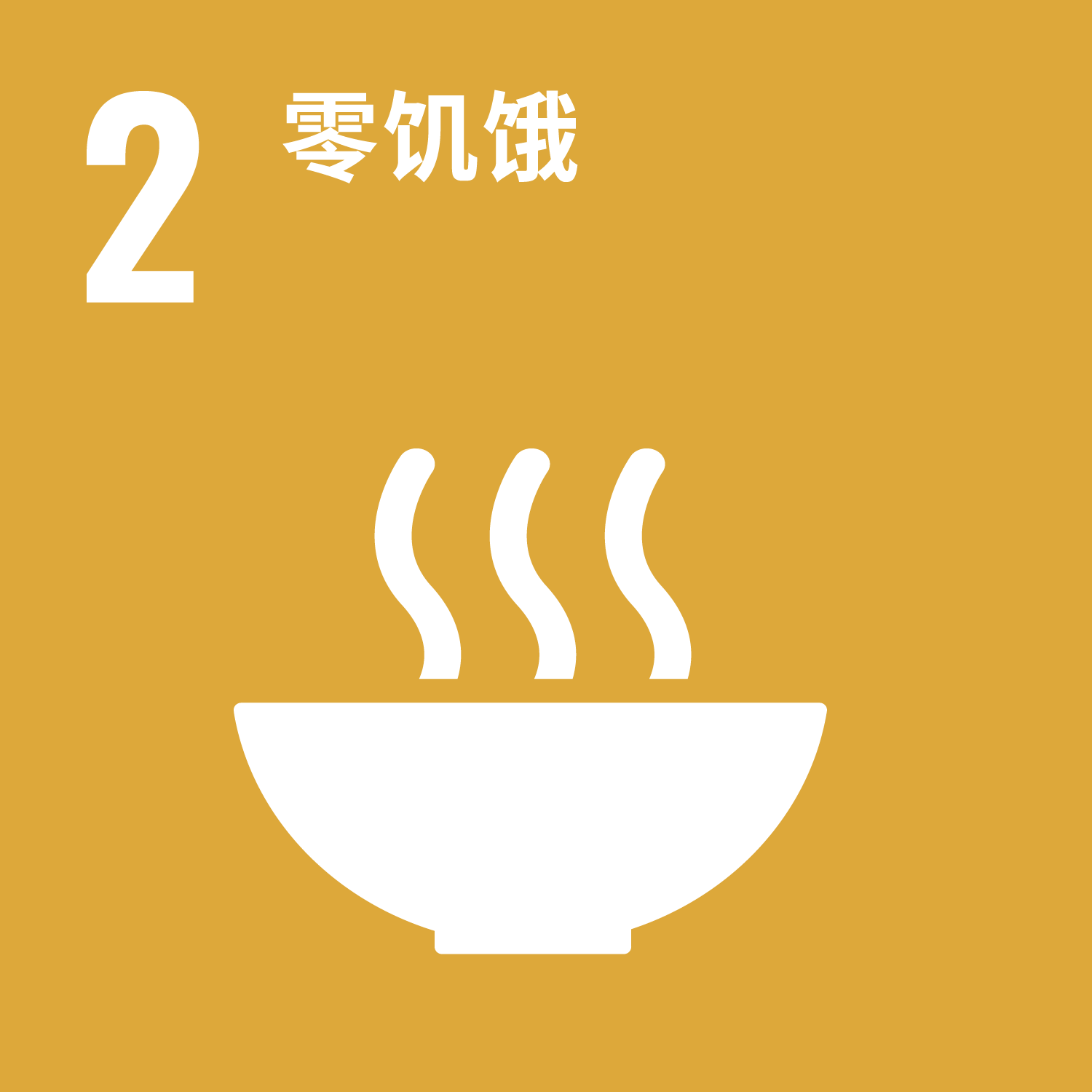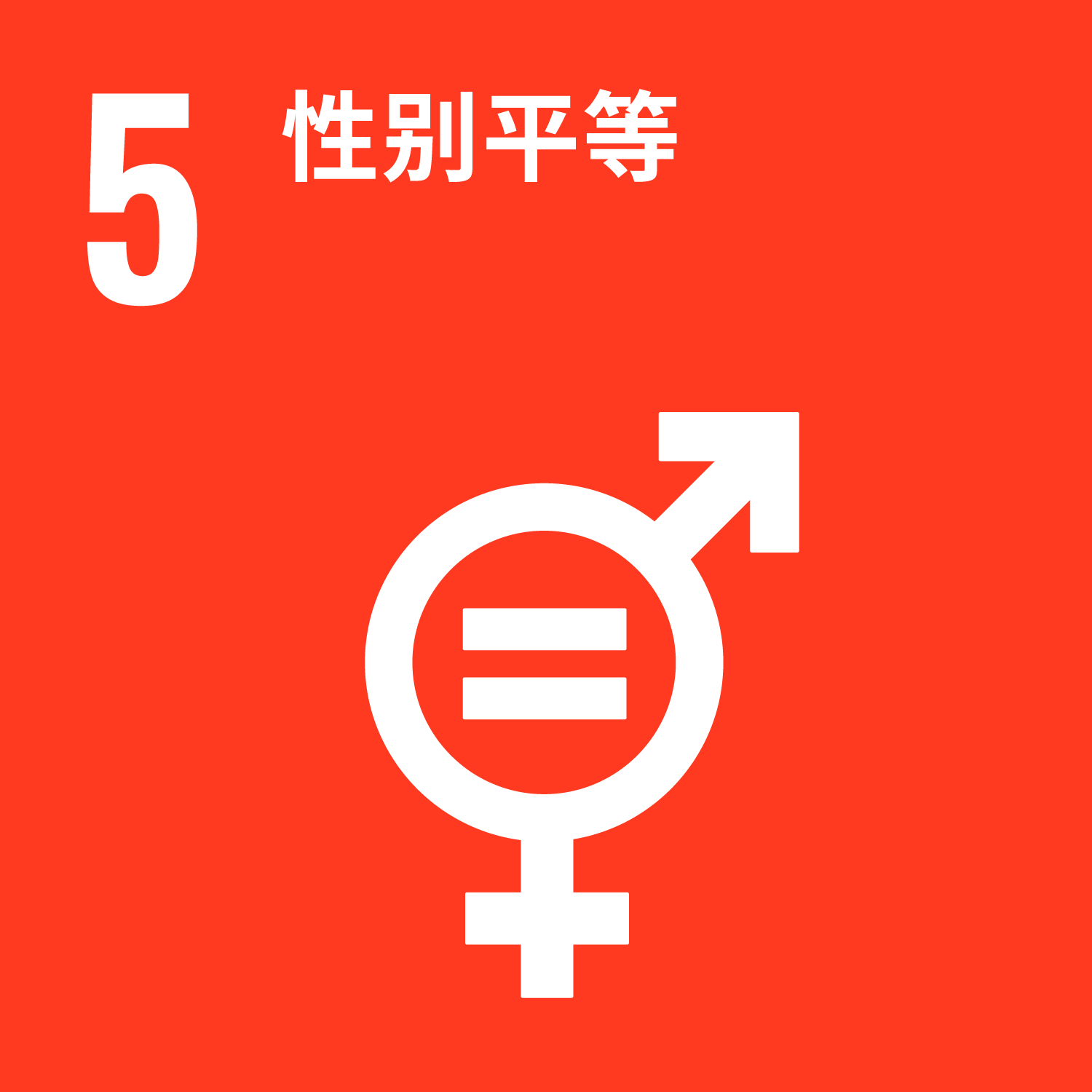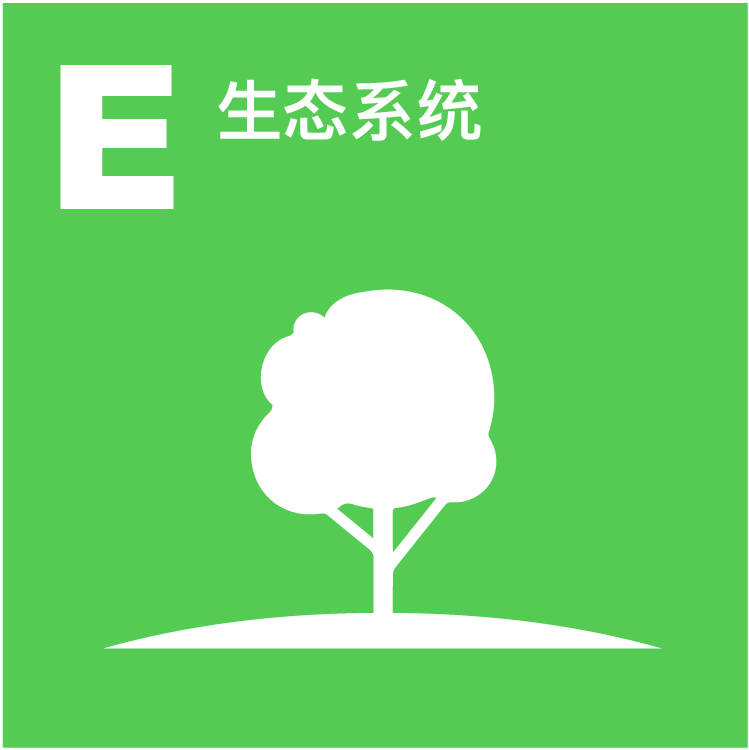亚洲女性高度参与农业活动,在实现可持续发展目标(SDG)的协同方面发挥着关键作用,特别是可持续发展目标2(零饥饿)、可持续发展目标5(性别平等)和可持续发展目标15(陆地生物),但她们在农业生产方面的决策权十分有限。本文探讨了女性在作物选择方面的家庭内部决策权与家庭膳食多样性之间的关系,并考察了作物多样性在其中的作用。本文使用的数据来源于联合国环境署国际生态系统管理伙伴计划,在亚洲五个国家的脆弱地区调查收集的1133户一手数据。分析结果表明,在亚洲脆弱地区,女性在作物选择方面的家庭内部决策权和家庭膳食多样性均很低。泊松回归和逆概率加权回归调整(IPWRA)方法显示,由女性独立做出作物选择决策的家庭,其饮食多样性得分比男性独立做出决策的家庭高0.250分。中介效应模型分析结果表明,蔬菜物种多样性(而非其他作物)在这一关系中起到部分中介作用(占12%)。
Women in Asia countries are often characterized by high participation but limited decision-making in agricultural activities, despite their critical role in achieving the synergistic benefits of Sustainable Development Goals (SDGs), particularly SDG 2 (Zero Hunger), SDG 5 (Gender Equality), and SDG 15 (Life on Land). This study examines the association between women's intra-household decision-making regarding crop choice and household dietary diversity and its underlying mechanism mediated by crop diversity. Using primary data collected from 1133 households in vulnerable areas across five Asian countries, this study finds that both the proportion of women's independent intra-household decision-making regarding crop choice and household dietary diversity score (HDDS) are low in these areas. Poisson regression and Inverse Probability–Weighted Regression–Adjustment method reveal that the households with women's independent decision-making regarding crop choice have 0.250 points higher household dietary diversity score than those with men's independent decision-making.
Corresponding author: Bai Yunli (yunli.bai@unep-iemp.org)







